 |
 |
Vintage planes in Brazil
Revista The Vintage Airplane - Fevereiro de 1981
|
|
|
|
| |
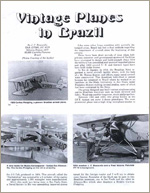 |
|
Like some other large countries with partially developed areas,
Brazil has had a dual attitude regarding the importance of
aircraft since the beginning of this century.
There have been short periods of time when both private concerns
and government-sponsored facilities have attempted to design and
build aircraft. Since 1910 the ~military has assembled and
operated imported planes and after 1930 several U. S. and German
types have been built under license. |
|
|
|
|
|
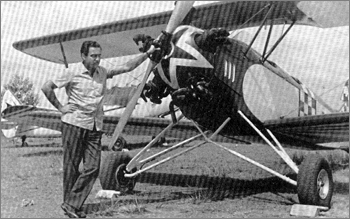
EAA member J.C.Boscardim and a Fleet biplane.
Fairchild PT-19 in background |
|
In Rio de Janeiro, in 1914, the Brazilian Navy organized a
naval aircraft facility where, with the help of a Mr. Horton
Hoover, and others, many naval aircraft were constructed. This
American individual is named because he remained in Brazil where
he worked in an institute at the State University in Sao Paulo
under Frederico Brotero making several studies, some of which
had been contracted by the Navy.
The group designed and built various airplanes using native
Brazilian materials such as wood, plywood and fabric. Wood was
used for longerons, struts and propellers.
Between 1930 and 1950, this group known as the I.P.T. turned out
some 2 dozen prototypes. The most prominent plane was a high
wing monoplane similar to
the J-3 Cub, produced in 1934. This aircraft called the
“Paulistinhas” was powered by a 3 cylinder, 45 hp engine and
approximately 1,000 examples were manufactured.
|
|
By
J.C.Boscardin EAA 127040, A/C 4376 Silveira Peixoto 1077
80,000 Curitiba Parana Brazil
Photos courtesy of the Author
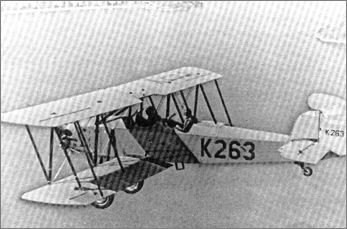
1929 Curtiss Fledgling, a pionner Brazilian airmail plane
|
While this work was being done in Sao Paulo State, a Naval
factory in Rio was assembling imported planes and manufacturing
under license such types as the Focke Wulf FW-44 and FW-56.
After the start of WWII production changed to Fairchild PT-19s
and later to Fokker trainers.
The private aviation industry in Rio was represented by a naval
shipbuilder, Henrique Lage who owned a sizeable facility and
hired the French designer, Mr. Renee Vandaelle. By 1934 the
serialized production of planes, the M-7 and M-9, designed by
Guedes Muniz had begun. Mr. Muniz studied in France where he
constructed one or two prototypes as a student. The M-7 and M-9
were biplane trainers powered by Gipsy engines.
In 1938-39 the Henrique Lage factory began to produce the HL
series. The HL-1 was a Piper-like high wing monoplane and the
HL-6 was a low wing aerobatic trainer. Even a single, light
trimotor craft was built.
After 1945 there was a “house cleaning” program and many
training and general use aircraft used during WWII were
scrapped. Many good, vintage aircraft flyable condition were
dismantled and the components simply disappeared. More than
2,000 airplanes distributed during the war effort to clubs and
schools, were reduced to a few dozen. Planes like the FockeWulf
Strosser were lost while some American Fleet 2’s and British
Tiger Moths survived.
|
|
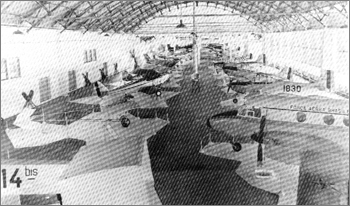
Some of
the aircraft displayed in the Museu Aeroespacial
Campo dos Afonsos - Rio. On the left are the Santos Dumont 14 BIS
and Demoiselle, a Muniz M-7, a CAP 4 ans others |
|
|
Nowadays it isn’t uncommon to see a PT-19 in use by an Aero Club
as an aerobatic trainer. A single PT-22 is being flown by one of
the clubs.
We were highly frustrated when governmental action resulted in
the scrapping of two FW-44’s. We have succeeded in restoring a
Fleet 2 and some gliders including a Kranich II which is one of
the most gratifying of all to fly.
At one time during 1944 a Brazilian facility was producing one
plane a day including a large number of Piper-like monoplanes,
the M-7, a biplane trainer resembling Moths and Buckers, and
the HL-6, a 2 place low wing aircraft with very good
performance.
In 1960 we helped with the restoration of one of the last HL-6
aircraft. This gave us a good opportunity to evaluate its
performance and other general characteristics. I think this
plane constitutes the biggest interest for the foreign reader
and 1 will try to obtain some figures. Examples of the HL-6 can
be seen in two Brazilian museums, one in Sao Paulo and the other
in Afonsos-Rio which also displays a flyable Curtiss Fledgling.
As late as 1950 there were some Ju 52’s, Weihe’s, and even a
flyable Me 108 but they have since vanished. American types such
as Wacos and Stearmans have deteriorated from abandonment mostly
because of a lack of operable power plants.
Today we can only see a possible restoration project, some
Aeronca Chiefs, 2 or 3 Luscombe Silvaires, a Bucker Jungmann or
two, and perhaps 2 or 3 Tiger Moths.
|
|
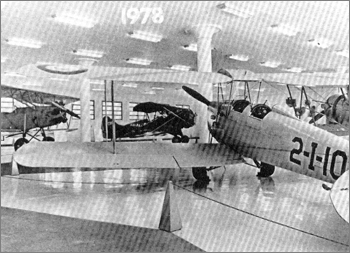
A view
inside the Museu Aeroespacial - Campo dos Afonsos - RIO.
The Curtiss Fledgling on the left is airworthy. |
|
|
|
|
|
 |